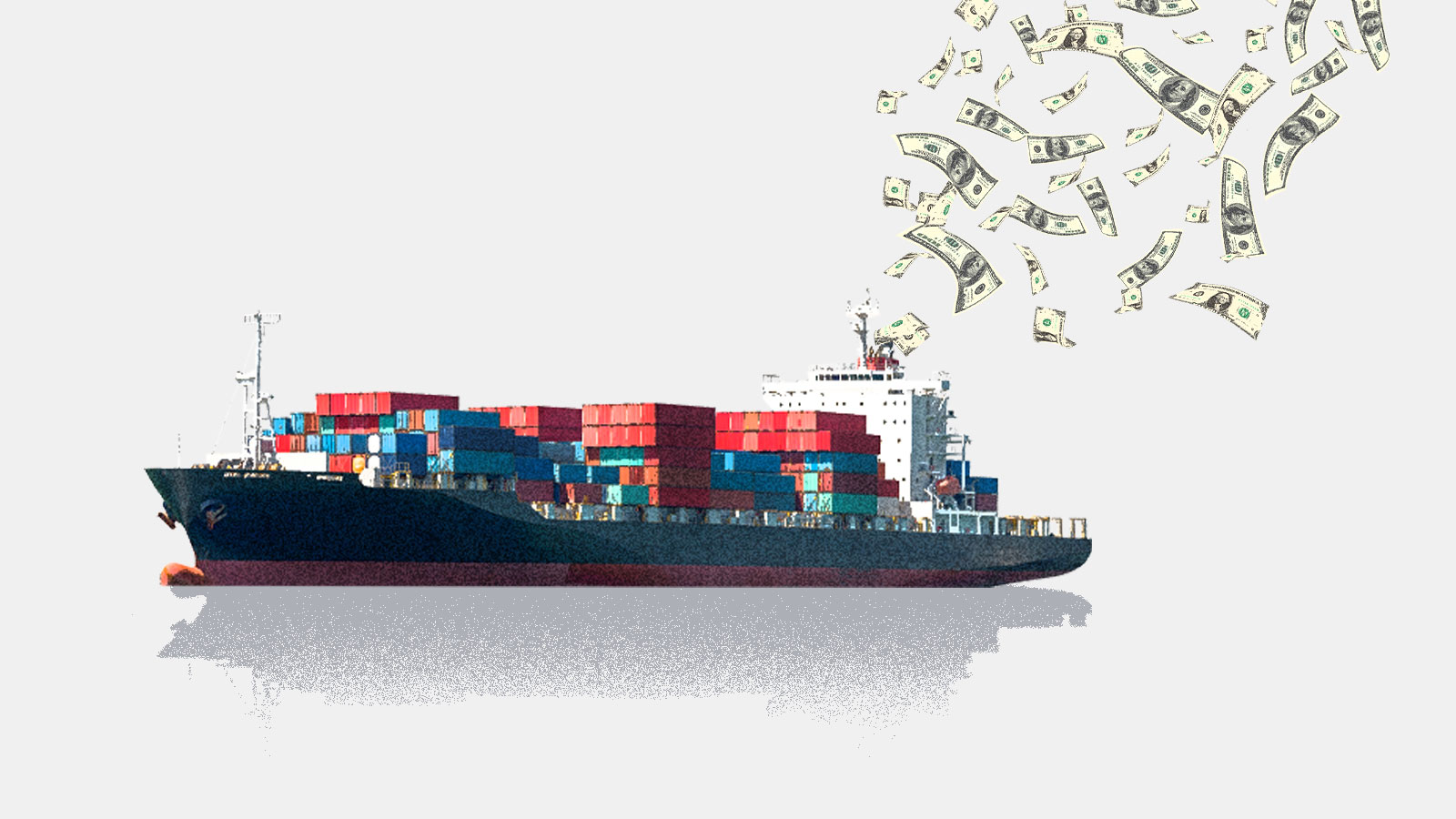When Donald Trump stormed into the White House in 2017, he brought with him highly unorthodox ideas about how the U.S. should trade with the rest of the world. Under his “America First” trading policy, the new president instituted heavy tariffs on things like steel, washing machines, and solar panels — raising prices for imported goods, irritating trading partners around the world, and even sparking a U.S.-China trade war. By 2019, his Treasury Department was bringing in $79 billion from tariffs: double the amount from just two years earlier.
Now, even after President Joe Biden campaigned on a platform of restoring international relationships, the Biden administration might be looking to institute some tariffs of its own — but this time, with the overheating planet in mind. According to an agenda recently released by the U.S. Office of the Trade Representative, the new administration is considering a “carbon border tax” or “border adjustment,” which could hike up the price on imports from countries that, in the view of the U.S., aren’t sufficiently addressing climate change. In Biden’s climate platform, he similarly vowed to impose “fees” on goods from countries “that are failing to meet their climate and environmental obligations.”
In theory, that kind of border tax or tariff would put pressure on other world leaders to cut carbon emissions; it could also protect U.S. corporations as they ramp up clean energy production. But it could also be tricky to implement — and if, done poorly, could spark yet another trade war.
The basic idea behind taxing carbon at the border is fairly simple. If a country has some sort of price on carbon domestically, the thinking goes, it should apply that same price to imports — whether of oil, steel, cement, or washing machines. That keeps cleaner domestic products from getting undercut by imports from abroad (an effect called “carbon leakage”), and motivates other countries to clean up their act. A $30 per ton carbon tax on domestic goods would become a $30 per ton tax at the border: easy peasy.
“That’s the textbook, ‘Econ 101’ version,” said Todd Tucker, the director of governance studies at the Roosevelt Institute, a New York-based think tank. A ton of steel worth $600 from China, for example, could jump in price to $660 under a $30/ton carbon tariff. (Producing a ton of steel releases, on average, two tons of carbon dioxide.)
Several countries are already starting down this path. The European Union has a price on carbon through its cap-and-trade system, and is planning to release plans for what it calls a “carbon border adjustment” in June. Prime Minister Boris Johnson of the United Kingdom, meanwhile, has suggested using his role as president of the Group of Seven industrialized countries to push for coordinated carbon border taxes among members.
This approach would come with complications for the U.S. The country doesn’t have a domestic carbon tax or cap-and-trade program; multiple failures to pass such policies at the federal or state level have pushed lawmakers to look at other options to squash greenhouse gas emissions. That could make it difficult for Biden to justify any sort of program that ratchets up the price on imports — how can the administration subject other countries to a standard that it can’t meet itself?
“It’s kind of perplexing to me that the Biden administration is floating this idea of a carbon border tax when there isn’t currently a national carbon price in the United States,” said Shuting Pomerleau, a climate policy analyst at the Niskanen Institute.
There are potential ways around that problem. Bentley Allan, associate director of the Pacific Institute for Climate Solutions, said that the U.S. could use an internal carbon price tied to stricter regulations for sectors like transportation, industry, and power generation. It would be akin to what’s known as the social cost of carbon, a value that estimates the damages from carbon pollution (which the Biden administration recently raised to $51 a ton). That could help justify the border tax even if the U.S. doesn’t have an official price on carbon emissions across the country.
For allies motivated to act on climate change, that could be enough. “If you’re the Europeans, you’re just thankful that Trump is gone,” said Allan. “And you’re thankful that you have a president that’s going to do something.”
But other countries whose exports get hit with the border taxes might not see it that way. China, for example, the U.S.’s number one trading partner and the world’s largest emitter, could bring complaints to the World Trade Organization, which prohibits protectionist tariffs and could authorize China to retaliate. (After Trump instituted heavy tariffs on foreign steel, China and the European Union launched WTO challenges and retaliatory taxes against many U.S. imports, including soybeans and bourbon.)
That’s the problem with a potential carbon border tax: At best, it could help protect critical industries during a difficult switch to green energy; at worst, it could spark a trade war that would slow efforts to cut emissions.
“A trade war with China is not good for decarbonization,” Allan said. “They’ve done really excellent work in driving down the cost of wind and solar. To turn around and try to exclude them from the global economy at this point … it could be bad for decarbonization, because we’d have to try to recreate those cost reductions.”
For now, the U.S. is moving slowly; experts say we shouldn’t expect a full carbon border tax proposal for at least another year or so. But the Biden administration will be facing increasing pressure in the coming months, if not to release its own proposal, at least to clean up its act enough to avoid tariffs that could be coming from the European Union, the U.K., or Canada. Biden’s special international climate envoy, John Kerry, was in Brussels last week and urged E.U. leaders to hold their carbon border tax proposal until after the next U.N. climate meeting in Glasgow in November. That would at least give the Biden administration the better part of a year to develop its own strategy.



